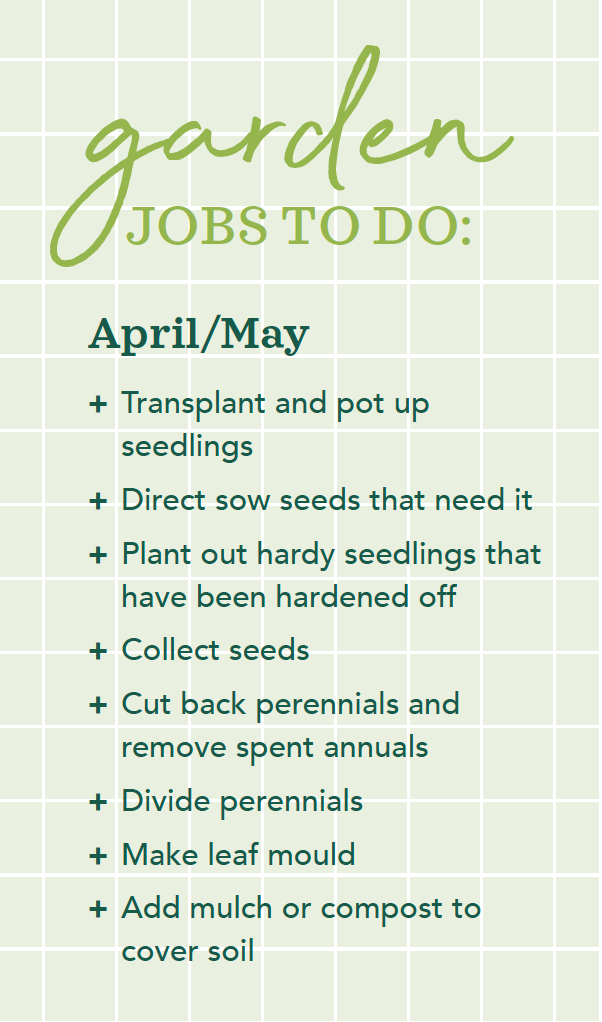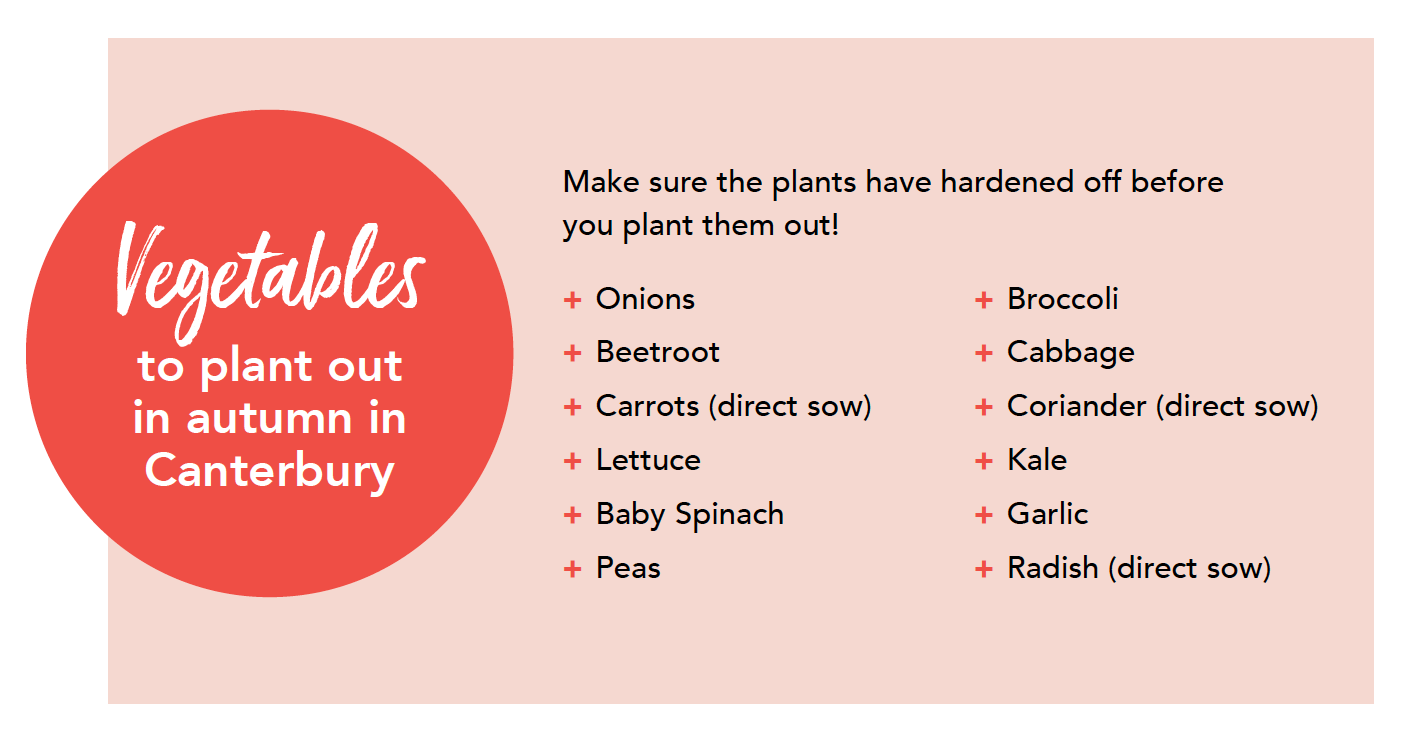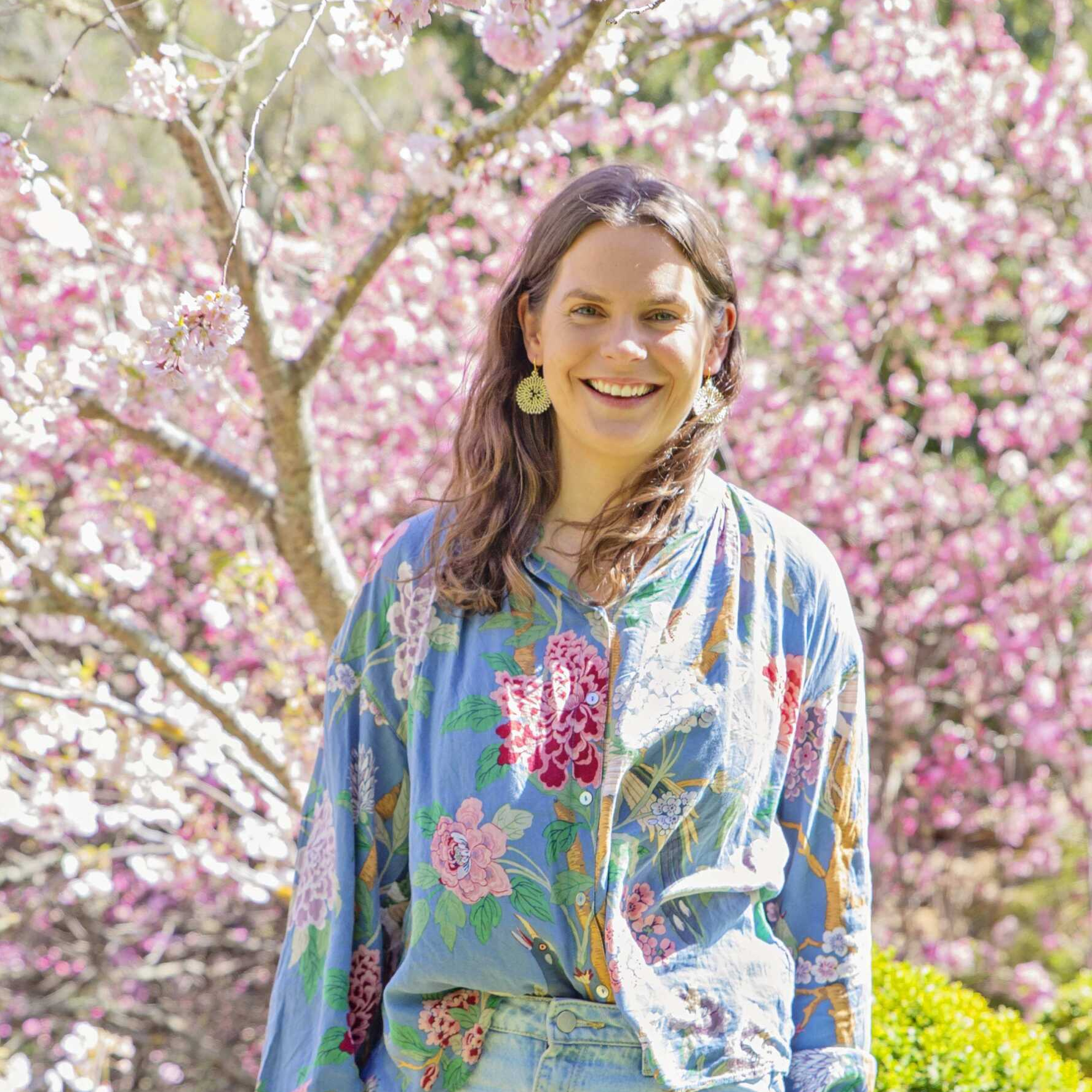Flora Brons of Flora Grow is here to guide us through the autumn months in the garden. It is going to be busy!
It is a bit of a myth that gardening slows down in the autumn and winter. For me, autumn is probably the busiest time of year in the garden and one that continues to be a busy production period in terms of harvesting food, so let’s get out there!
Autumn is my favourite time of year in the garden. The days are still warm and long enough to get into the garden when you get home from work. The deciduous trees are changing to the most beautiful ambers and yellows. There are still plenty of blooms around, lots of food and seeds to harvest but ultimately, the plants are starting to wind down to prepare for the cold months ahead. This means we can start to clear out the scraggly old plants, have a big tidy up and make way for new fresh seedlings. After a long hot and dry Canterbury summer, autumn is always such a welcome relief for me and the garden!

Planting out hardy seedlings
I know it feels mean sometimes planting out seedlings when the first frost is about to arrive. But many seedlings are best planted out in the autumn so they can either fatten up over the winter or build up their root system ready to flower in spring. Or with vegetables, you will be able to harvest from them through the winter or early spring.
Mulching and composting
Adding fresh mulch or compost to my garden is one of the most satisfying jobs. Instantly it makes the garden look much tidier and the garden pops again. There are many benefits to mulching and composting and I highly recommend putting a couple of inches in your garden in the autumn once you have done a big clear-out of the garden.
Benefits of mulching and composting
⎫ Keeps weeds down
⎫ Keeps the roots warm and protected from frost and pests
⎫ Adds organic matter and improves soil structure
⎫ Reduces soil erosion
⎫ Adds nutrients and increases the microbiome
⎫ Creates homes for bugs to hide over winter
⎫ Makes the garden look very tidy
Seed collecting
This time of year many plants are putting out their seeds so they can reproduce for the following year. Seeds are clever and will sit in the soil and wake up when they are ready. Some like cold soil to germinate where some need it to be warm again.
Many flowers will have lots of seeds on them like Nigella, Larkspur, Scabiosa, Echinacea. Once the seeds are dry, have gone brown and come away from the seed head easily they should be ready to harvest. I always sprinkle plenty around the garden so they can self-seed as well as collecting some to sow later on, or to give to friends.
If you do save some seed, store them away in a cool dry area ready for sowing in the spring. Make sure you label them straight away! Otherwise it can become a bit of a lucky dip gamble at seed sowing time.

How to deal with the excess of autumn leaves
For some, picking up the falling leaves of autumn can feel like a never-ending job. However, these leaves can create a nutrient-rich leaf mould which you can use as mulch in your garden if they are left to process correctly over time.
You will need:
- Rake
- Pile of fallen leaves
- Bag/basket with holes in it or chicken wire/sheep netting circle pen
- Hose/water
- Sheltered spot
- Lawnmower (optional)
1. Shred leaves with a mower if you can first. This helps to speed up the breakdown.
2. Pile them into an old rubbish bag, jute bag or wire basket. Just make sure it has some air holes in it.
3. Ideally you would then put the pile in a sheltered position against a fence or near a shed.
4. If the leaves are dry, add some water to dampen them down.
5. Cover up the pile and leave it for a minimum of 6 months depending on the size of the piles.
Once the leaf mould has been formed you can then use this nutrient-rich mulch to add to the top of your soil. It will help to add nutrients, keep moisture in the soil, add organic matter to the top soil, reduce weeds and increase the microbiome of the soil.

With an agricultural degree from Lincoln University, along with an entrepreneurial mindset, Flora Brons was inspired to develop Flora Grow to educate and influence the community on sustainable living through her knowledge of plants and the ecosystem. Her passion for plants, nature and people drives her continued success. floragrow.co.nz
Recent stories



All Rights Reserved | CountryWide Media

